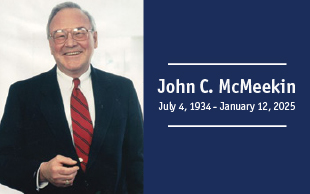This summer, PHMC’s Community Health Data Base (CHDB) fields its 2010 Southeastern Pennsylvania
Household Health survey, providing an opportunity to measure some of the earliest regional effects of changes in access to care resulting from healthcare reform. The new legislation is expected to provide increased security to Americans who already have insurance while expanding coverage to an additional 32 million uninsured Americans over the next several years. Although many of the provisions of healthcare reform will not be enacted until 2014, many Americans, particularly children and young adults, are already benefiting from a number of immediate provisions. Under the new law, coverage for young people under their parents’ plan is extended until age 26. The legislation also bars health insurance companies from denying coverage to children with pre-existing conditions and rescinding coverage after a policyholder gets sick.
Other key provisions of healthcare reform focus on health disparities and will likely impact ethnic and racial minorities. Such provisions include efforts to expand access to health care through Medicaid expansion and health exchanges, as well as workforce development—particularly in medically underserved areas—and expansions of community health centers.
PHMC conducted its last survey in 2008, documenting disturbing disparities in care among uninsured and insured persons in Southeastern Pennsylvania. Approximately one in 10 adults ages 18–64 (9.8%)—representing about 237,400 individuals—did not have public or private health insurance. Nationally, an estimated 46 million Americans, nine million of them children, are uninsured.
Despite provisions such as the federally funded State Children’s Health Insurance Program, better known as SCHIP or CHIP, many children in southeastern Pennsylvania have inadequate coverage. In 2008, 4.2% of children under age 18 in the region, or about 39,000, had no private or public insurance. Across the five-county region, Philadelphia had the highest proportion of uninsured children (5.1%).
Profile of Uninsured Pennsylvanians*
- Nationally, about 30% of young adults are uninsured. In southeastern Pennsylvania (SEPA), young adults are more than twice as likely to be uninsured compared with any other age group: one in five adults ages 18–29 (19.5%) are uninsured, compared with 8.5% of adults 30–39, 9.1% of adults 40–49, and 6.1% of adults 50–64. Young adults are also more likely to lack insurance than children (19.5% and 4.5%, respectively).
- A higher proportion of men are uninsured than women (11.2% and 8.7%, respectively).
- Racial and ethnic minorities represent only one-third of the total US population, yet they comprise more than 50% of the nation’s uninsured. In SEPA, racial and ethnic minority adults are more likely to be uninsured than white adults: 29.8% of Latino adults are uninsured, followed by black/African American adults at 14.5%.
- In SEPA, 7% of black children are uninsured compared with 2.7% of white children and 4.5% of Latino children.
- 14.1% of SEPA children with asthma do not have insurance.
- Adults living below 200% of the federal poverty level are more than four times as likely to be uninsured than those living at or above 200% of the federal poverty level.
For more information about the Community Health Data Base or access to care, CHDB director Francine Axler at This email address is being protected from spambots. You need JavaScript enabled to view it..
PHMC's Household Health Survey
Summer 2010
Did you recently get a call asking you to participate in a brief phone interview about your household’s health? It may have been PHMC's Community Health Data Base. Conducted every two years, the Southeastern Pennsylvania Household Health Survey examines the health and healthcare experiences of area residents. Survey data help in the planning and enhancement of local and regional health services. The survey encompasses approximately 10,000 households across the region. By taking a few minutes to answer questions, you played an important role in improving local health care services. We thank all who participated.





